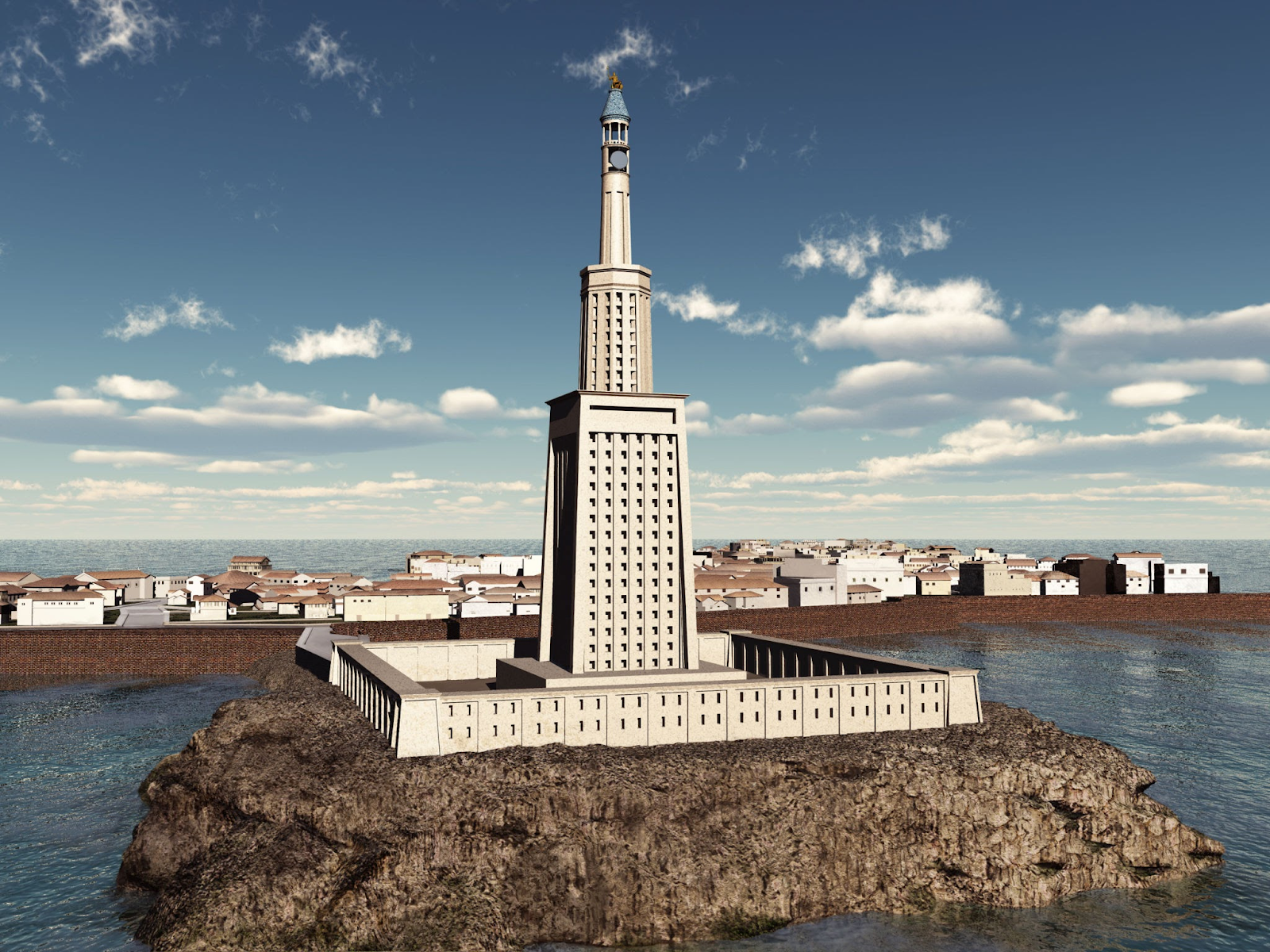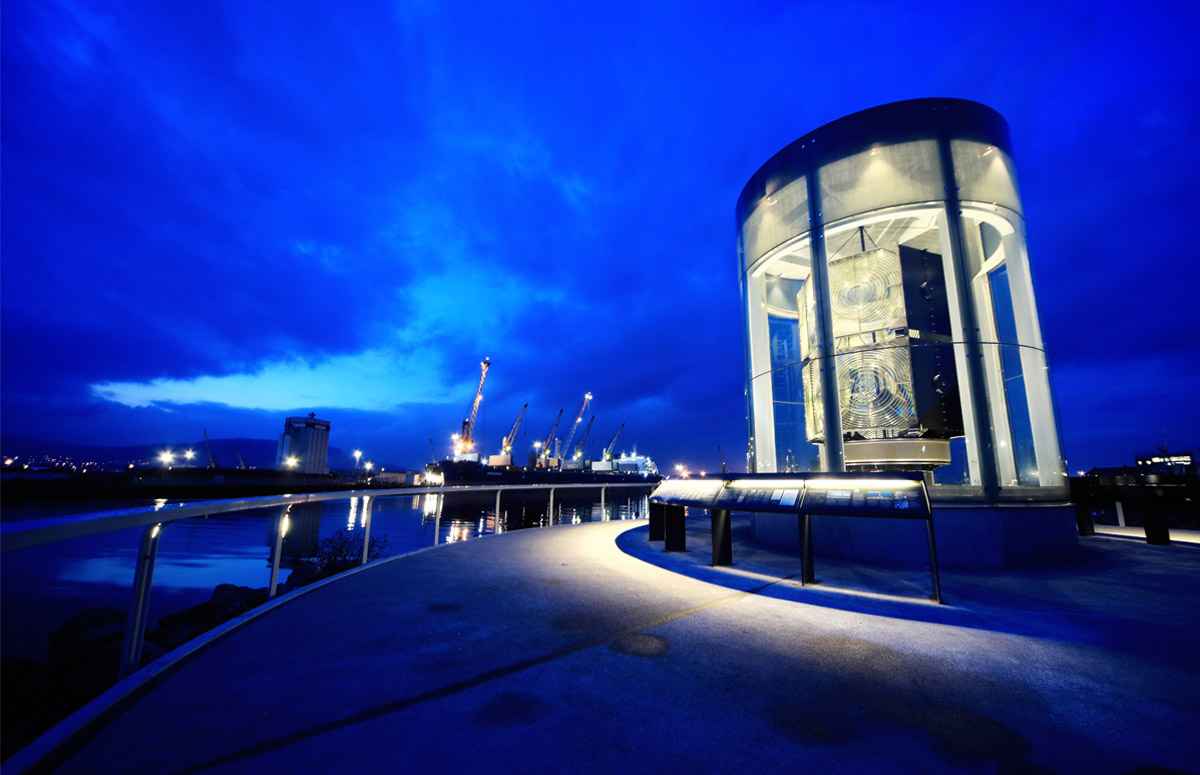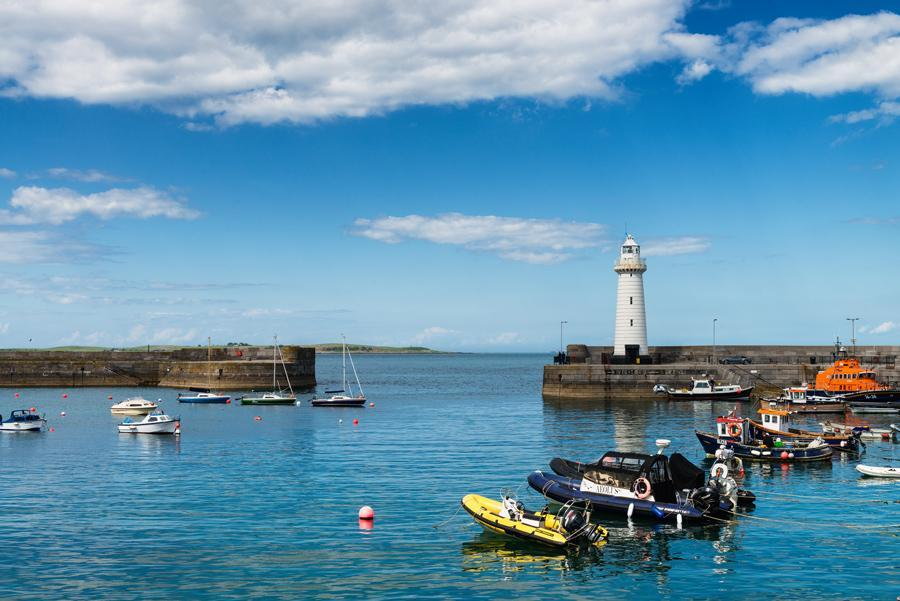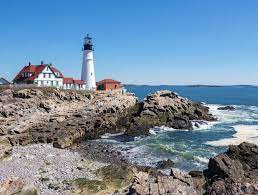From humble beginnings as primitive flames to their automation today, these flashing lights have come a long way. Their historic beginnings stretch right back to Egypt, where one of the Seven Wonders of the Ancient World was in fact a lighthouse. The first lighthouse in recorded history was Egypt’s Pharos of Alexandria. Built around 280 BC, the source of light was a huge open fire at its summit. As well as being the world’s first, it was also the tallest one ever built, standing a colossal 450 feet high.
 |
| Egypt’s Pharos of Alexandria |
In the ancient world, long before we had actual towers hosting any sort of lamp, mariners would use man-made piles of rocks as daymarks and the glow of volcanoes as a guide at night. Bonfires were also used, along with more sophisticated braziers or metal baskets, which were lit and placed on headlands. In Ireland braziers were being lit as early as the fifth century. A astute monk named Saint Dubhán kept a warning beacon lit at Hook Head to prevent sailors from becoming shipwrecked on the rocky coast.
 |
| Hook Lighthouse |
In the 1600s, the first proper lighthouse structure at Cork’s Old Head of Kinsale showcased a lighthouse design unique to Ireland. The cottage-style lighthouse had an open coal fire in a rooftop brazier. Remarkably, the ruin of this unusual lighthouse is still there today - why not pop by when visiting Ballycotton or Galley Head in Cork ?
 |
| Ballycotton |
Getting Technological
With many passing centuries, the source and quality of the light itself gradually improved. Evolving from wood-burning fires, to coal and substances like pitch and oakum, for a time the lamp even consisted of rows of candles! Spider lamps were also used before the introduction of the revolutionary parabolic reflector in the 1700s.
This industrial marvel was a bowl-like device with a small oil lamp in the centre. The light from the lamp was gathered and focused into a beam. Just like putting a mirror behind a flame, it created the first highly-efficient lighthouse lamp. Later the invention of the Argand lamp resulted in a light that was seven times brighter than a candle and could be lit using fuels like lard oil and sperm whale oil. The Argand lamp was used inside the lighthouse’s Fresnel lens (see Belfast’s Great Light for a stunning example) until the invention of the electric light bulb towards the end of the 19th century.
 |
| Belfast’s Great Light |
The Golden Age
The 19th century was a golden age for Irish lighthouses. Founding father of the Commissioners of Irish Lights, George Halpin, built many of our coast’s most admired lighthouses, and improved much older ones using the very best of the era’s innovation.
 |
| Irish Lights |
Kerosene and paraffin were widely used in Ireland to fuel the light, prior to the introduction of electrification here in the 1930s. Donaghadee Lighthouse in County Down was the first lighthouse to go electric on the island of Ireland in 1934.
 |
| Donaghadee Lighthouse |
Decades later with the conversion to unwatched automatic operation in the 1980s, came a new side to the lighthouse’s role. As well as keeping ‘a good light’, modern technology came to the fore. The electronic Automatic Identification System (AIS) tracks and identifies ships navigating the water, but the transmitter needed to help the AIS function is placed inside the lighthouses.
So just like the evolution of the lamp itself, these resolute towers of light are always moving with the times too. Why not find out more with a trip to or an overnight stay at one of the Great Lighthouses of Ireland ? You’ll soon find that each tells a story more captivating than the last.




No comments:
Post a Comment